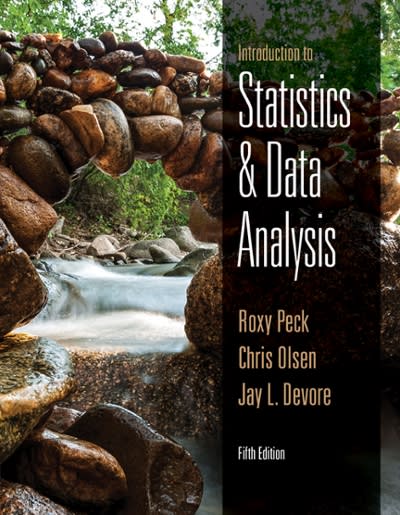3.28 U.S. Census data for San Luis Obispo County, California, were used to construct the following...
Question:
3.28 ● U.S. Census data for San Luis Obispo County, California, were used to construct the following frequency distribution for commute time (in minutes)
of working adults (the given frequencies were read from a graph that appeared in the San Luis Obispo Tribune [September 1, 2002] and so are only approximate):
Commute Time Frequency 0 to ,5 5,200 5 to ,10 18,200 10 to ,15 19,600 15 to ,20 15,400 20 to ,25 13,800 25 to ,30 5,700 30 to ,35 10,200 35 to ,40 2,000 40 to ,45 2,000 45 to ,60 4,000 60 to ,90 2,100 90 to ,120 2,200
a. Notice that not all intervals in the frequency distribution are equal in width. Why do you think that unequal width intervals were used?
b. Construct a table that adds a relative frequency and a density column to the given frequency distribution (Hint: See Example 3.17).
c. Use the densities computed in Part
(b) to construct a histogram for this data set. (Note: The newspaper displayed an incorrectly drawn histogram based on frequencies rather than densities!)
Write a few sentences commenting on the important features of the histogram.
d. Compute the cumulative relative frequencies, and construct a cumulative relative frequency plot.
e. Use the cumulative relative frequency plot constructed in Part
(d) to answer the following questions.
i. Approximately what proportion of commute times were less than 50 minutes?
ii. Approximately what proportion of commute times were greater than 22 minutes?
iii. What is the approximate commute time value that separates the shortest 50% of commute times from the longest 50%?
Step by Step Answer:

Introduction To Statistics And Data Analysis
ISBN: 9781305445963
5th Edition
Authors: Roxy Peck, Chris Olsen, Jay L Devore





